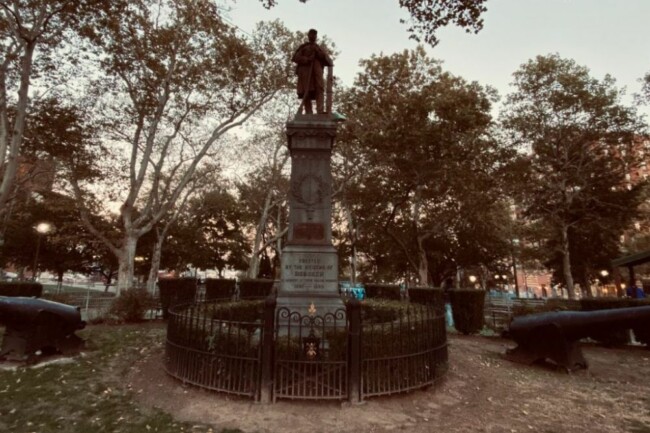Halloween is just around the corner here in Hudson County, which means it’s officially the spookiest, most haunted time of the year. And there’s nothing more fitting for this season than telling ghost stories — especially those with some historical validity. Ghost stories were not always told around a crackling fire in the dead of an October night. Sometimes, they were printed in newspapers alongside the stories and politics of the day. In the late 1800s, Hoboken and Jersey City seemed rife with ghosts, ghouls, and other creepy spirits in the night. In honor of October, we’ve rounded up four real ghost stories which all made news headlines at the turn of the century over 100 years ago. From an inexplicable looting of a local Jersey City saloon, to the return of a murdered wife, to a spirit terrorizing a local Hoboken park, these stories are sure to creep you out. Read on for some historically-documented local Hoboken + Jersey City ghost stories.
The Greenville Ghost
Published in The Jersey City News | February 10th, 1894
Content Warning: Suicide
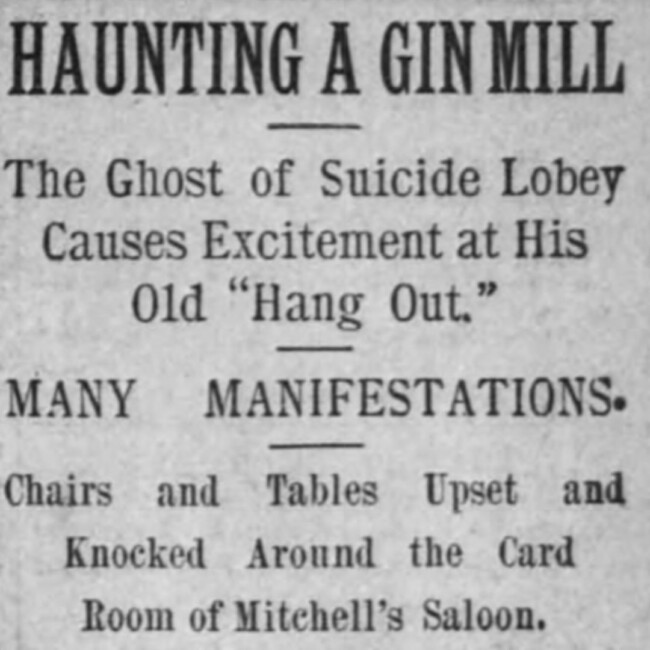
A tavern once stood in Greenville called Mitchell’s Saloon, and some unexplainable misdeeds began to occur after dark.
The Jersey City News reported:
“The first appearance of his ghostship was made last Saturday night, in a room at the rear of James Mitchell’s saloon, at McAdoo and Bergen Avenues. The ghost is supposed to be that of August Lobey, who committed suicide on Saturday afternoon by hanging himself in a woodshed at the rear of his residence on Terhune avenue.”
Read More: The Jersey Devil: A Brief History
At Mitchell’s Saloon, a backroom was used for card games and a bell was affixed therein to allow card players to call for bar-service. That Saturday, as customers discussed August’s suicide, the bell of the back room began to ring frantically. James entered the room only to find it empty with all the windows locked. He returned to his work at the bar, but he continued to feel uneasy. The patrons noticed and inquired what he’d seen in the backroom. Just as James opened his mouth, a scary commotion was heard in the rear of the saloon.
The customers all leapt from their seats and rushed into the room, where they found every chair upturned, and one table still rocking violently. As soon as the last man entered the room, the chair stopped. Again, the windows were checked, and just as before, all were found to be locked and secure.
A policeman named Phil McGovern was passing the bar at this time, and heard the clamor, so he entered the saloon and demanded to know the cause of the disturbance.
To which James said, “It’s Lobey’s ghost!”
Officer Phil was extremely skeptical and warned James and the rest of the patrons that he’d lock them up if they didn’t stop fooling around. James told the officer he’d have to stick around and see for himself, uprighting the chairs and restoring the room to its original state. Customers returned to their drinks and discussed the strange affair.
Officer Phil decided to patrol outside Mitchell’s Saloon to catch any vandals (and, let’s face it, he was probably a little curious about this supposed ghost).
One hour later, the chairs and table were again knocked down and tossed all over the room.
All hands rushed toward the scene, as did Officer Phil, who had stood guard all the while and reported that no one had even passed the premises while he was on lookout.
Sensing the odd, devilish atmosphere, one by one, the customers left the saloon — forcing James to close earlier than normal.
The following morning, when James returned, the tables and chairs were again overturned. Everything remained quiet on Sunday, but on Monday, the ghost “started in to raise high jinks.” Chairs were upset and the bell was rung repeatedly. On three different occasions, patrons in the bar witnessed unexplainably violent upheavals and the strewn disarray of furniture.
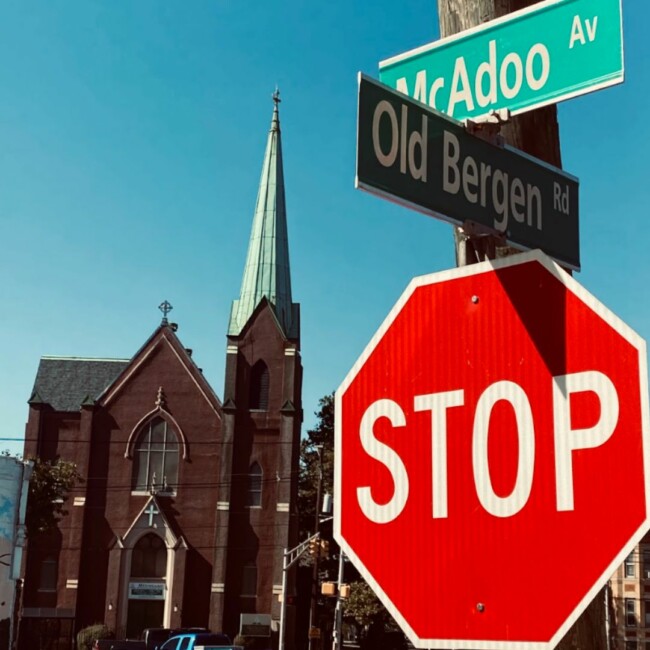
After Monday, the ruckus seemed to cease, but August’s ghost still appeared to haunt Greenville. As The Jersey City News reported:
“On Thursday night Mr. G. Daffledecker declares that he saw a strange white object on Bergen avenue near McAdoo. Mr. Daffledecker was walking along Bergen avenue and the object which had the form of a man, seemed to be walking toward him. He asserts that it came within twenty feet of him and then suddenly disappeared as though the earth had swallowed it up. Other residents claim that they have seen strange objects in the neighborhood and now timid persons fear to walk there after dark.”
The Murderer’s Ghost (JSQ)
Published in The Jersey City News | June 2nd, 1894
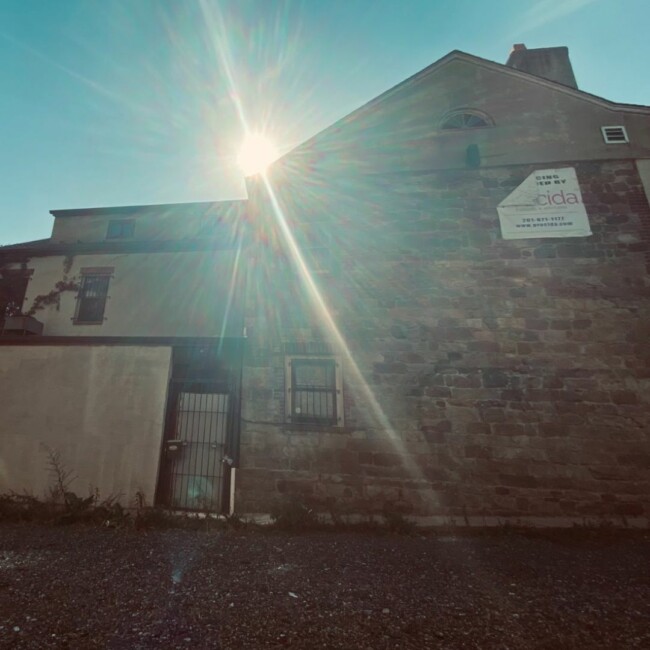
The original Hudson County Jail was located at 510 Summit Avenue, beside the Newkirk House, which is the oldest surviving structure in Jersey City. At this jail, The Jersey City News reported how a murderer saw the grizzly ghost of his lover and victim.
On the night of June 1st, 1894, Jail-Keeper Terwilliger made his usual rounds, inspecting cells, when he overheard wails and sobs echoing from the corridors. He followed the moans to discover they were coming from the cell of Bernhard Altenberger, the accused murderer of Katie Rupp.
According to The New York Times, Bernhard was 22 years old with a boyish disposition. He had courted Katie in Rome, NY, and won her love, promising to marry her, and “borrowed” all the money she had saved. He convinced her that marriage in Jersey City would be best, and they took up a room on York Street — telling the landlady that they intended to be married before the evening. Bernhard confessed at his trial that he had not intended on killing Katie, but realized he could not support a family. The two were walking along Snake Hill, in present day Secaucus, when Bernhard shot her. Katie was found mortally wounded the following day and was taken to the Jersey City hospital. There, she survived just long enough to give the information upon which Bernhard was arrested and condemned.
On the night of June 1st, 1894, Bernhard looked in great distress, sobbing violently and trembling upon the jail cell floor. A wild stare gleamed from his eyes as he crouched down in a corner of the stone cell.
Keeper Terwilliger asked what was wrong.
“Oh, I have seen her — Katie has been here!”Bernhard said, and he threw himself further back into the corner, turning an appealing face toward the keeper.
The Jersey City News then details Bernhard’s very words:
“She came right up to me, and oh, how she looked. There was blood on her neck and face and she put one hand on her breast as if in pain. Her face was pale and her eyes looked at me in a sorrowful manner. I did not say a word, I could not, for my tongue seemed to be glued to the roof of my mouth, but I watched every move she made. How she got into the cell I don’t know, but when I first saw her she was standing near my bunk, and was looking at me with such a sad and reproachful expression I tried to say something but the effort failed. It seemed to me that Katie stood looking at me a long time, and when finally she did remove her gaze from my face, she glanced about the cell and solemnly pointed her finger toward the wall, where I saw in letters of fire the word ‘Justice.’ I tried to cry out but couldn’t, and Katie, with one more reproachful look at me, faded from view. It was then that I cried out.”
Nothing Keeper Terwilliger said could convince Bernhard that he had not seen the ghost.
“It was her ghost!” Bernhard shouted, shaking in tears. But it didn’t matter.
That night, Bernhard could not sleep, tossing and turning on his bunk. When the sun arose, he seemed slightly relieved, and for the first time, he craved companionship his fellow prisoners. But all day, nervousness and anxiety followed him. He trembled violently whenever anyone spoke to him, and he apprehensively glanced about.
The Reverend E.A. Meury called at the Jail and greeted Bernhard, who begged Rev. Meury not to leave, and before the Reverend departed, Bernhard made him promise to return as soon as possible.
Bernhard was hanged in the Hudson County Jail at 10:04AM September 6th, 1894 under the direction of Rev. Meury, who attended him to the scaffold.
“Scotch Mag,” The Lafayette Ghost
Published in The Jersey City News | December 17th, 1889
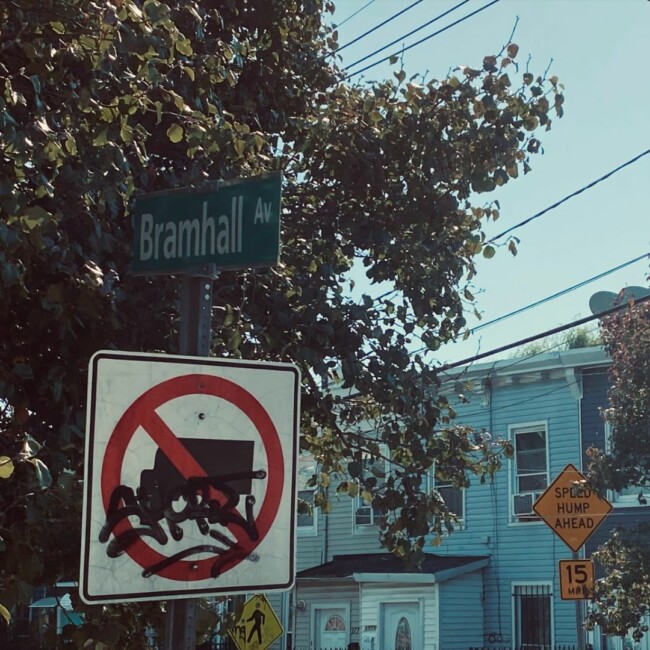
On the corner of Bramhall Avenue and Woodward Street now resides the beautiful Berry Lane Park, but at one time, it was a busy, watery thoroughfare of the Morris Canal. A slovenly inn owned by John Cregan overlooked the canal, and took in gruff, transient patrons, often working the barges. As The Jersey City News reports:
“The spook, spirit, or whatever it may be, first manifested itself to Mr. Cregan the night after he moved in. It has been paying nightly visits ever since… “
On Saturday night, John had closed his inn and went to bed with his family. They were fast asleep when a battering at the door awakened the entire household. John hurried down stairs to find a young man named Denny Brown, looking terrified. Denny’s hair stood on end and he was as pale as the snow on the ground and begged to be let in, which John allowed. John needed to get up early for work, so Mrs. Cregan help Denny as John went to bed for the night.
After about an hour, Denny was finally overcoming his fear when a loud bang burst from behind the bar “as though all the spooks in creation were juggling the beer kegs and the water and ale pipes were engaged in a wrestling bout. Mrs. Cregan was more than frightened. So was Denny, but neither had courage to shout for more company.”
After that night, Denny never returned to John’s inn.
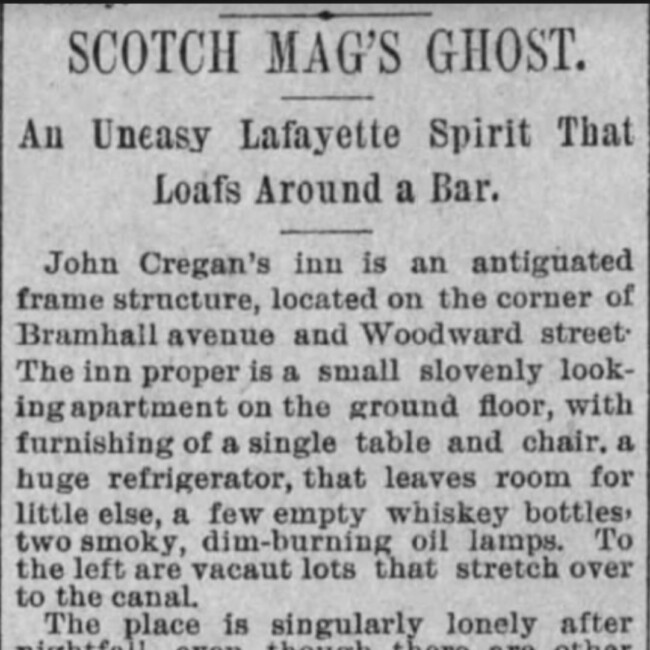
Another night, John was closing up and dimming the gaslight when “his face was grabbed and held as in a vice, and then twisted until he thought it was broken. [John] offered up a prayer for courage and assistance which was granted. Upon turning up the lights nothing unusual could be discovered, everything being in its place… [John] says he would not remain there five minutes if he could dispense of his five year lease, while the thought of remaining there four more [years] almost makes him gray headed.”
The Jersey City News attempted to identify the spirit and believed the culprit to be a woman known as “Scotch Mag” who had died at the location of John’s inn two years before the ghostly encounters. She had died without anyone to attend her burial. As The Jersey City News reported:
“It is supposed that she liked the place so much that she returns every night. When not cutting capers in the barroom, the mysterious being is meandering up and down the parlors.”
The Hoboken Ghost
Published in The Jersey City News | March 28th, 1902
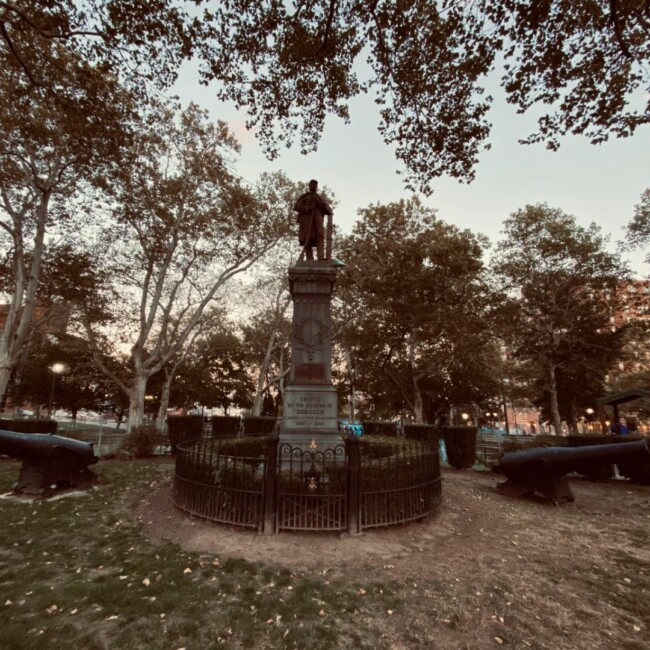
“There is a new kind of ghost in Hoboken,” The Jersey City News reported in 1902.
But this particular ghost had none of the traits of a conventional ghost. Whereas most ghosts were depicted as white figures, this ghost, instead, was said to have appeared dark, and its sole purpose seems to have been destroying trees at Stevens’ Park in front of Stevens Institute of Technology.
See More: We Compiled A List of New Jersey-Inspired Halloween Costumes
A Tornado had swept through a year before, in 1901, but it did not do half the damage as the ghost had accomplished that week in 1902.
At first, Parkeeper Walker thought the destruction was caused by a gang of vandals, and he’d made an official report. Police organized to patrol the park, but they watched in vain. Parkeeper Walker decided to watch for himself, and one night saw a figure in black strip a young tree of all its branches. Both Parkeeper Walker and the police chased the figure, but it disappeared into the night.

